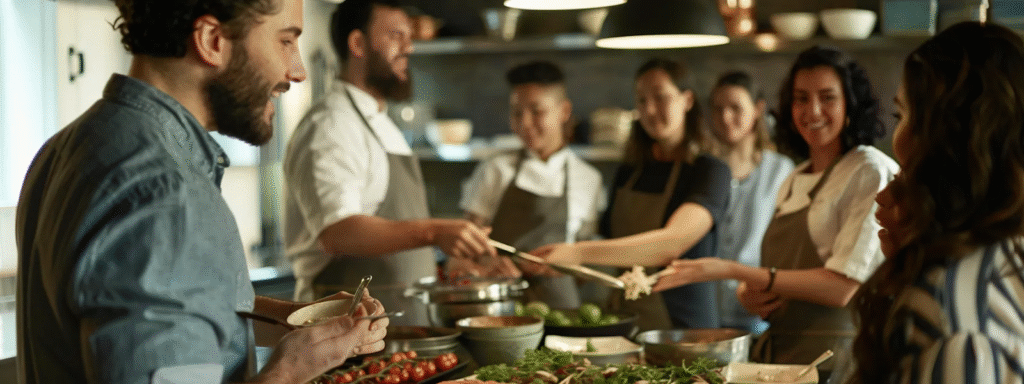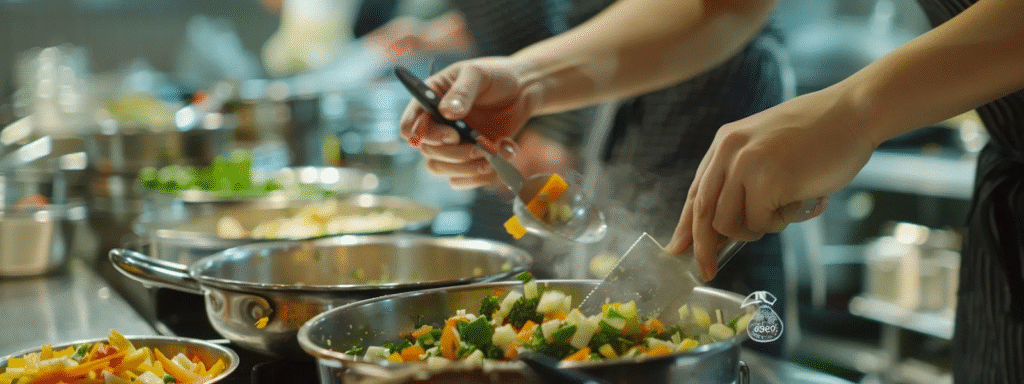The path from being a kitchen novice to a proficient home chef is a deliciously rewarding journey. For many, it begins with the humbling experience of a burned dish or an underseasoned soup, leading to the pursuit of culinary education. Cooking classes are gaining popularity, offering both aspiring chefs and hobbyist cooks the opportunity to refine their skills. Through professional guidance, structured lessons, and hands-on experience, these classes are pivotal in transforming kitchen enthusiasts into confident cooks. Continue reading to discover the growth arc that cooking classes foster and the skills they impart to attendees.
The Transformational Journey of Cooking Class Attendees
Stepping into a cooking class, attendees are often a mix of excited and nervous, equipped with varying levels of culinary knowledge. They come seeking improvement, and these classes promise just that. Through a series of structured modules, culinary courses cover a wide range of topics, from basic knife skills to advanced flavor development, ensuring a comprehensive learning experience.
Enrolling in a cooking class nyc can be the starting point for this transformation.
The journey transcends mere skill acquisition; it involves a personal transformation. As attendees measure, chop, sauté, and plate, they inch closer to kitchen mastery. Mistakes made along the way become stepping stones, as each class session builds on the last, reinforcing learned techniques and nurturing culinary intuition.
Cameras in hand, many students eagerly capture their plated creations, showcasing the fruits of their labor. These snapshots serve as tangible milestones along a gastronomic path. They echo the pride and joy that stem from successfully replicating a dish that once seemed beyond their grasp.
Progress in a cooking class is often palpable. The once tentative movements become more assured, and the flavors become more balanced. Each session contributes to the attendees’ evolution from following recipes to creating their own culinary renditions, an unmistakable sign of their growth.
Essential Cooking Skills and Techniques Learned in Class
The curriculum of a cooking class is meticulously designed to cover a gamut of essential skills. It typically begins with knife skills, teaching students how to dice, mince, julienne, and chiffonade with precision, a fundamental proficiency in any chef’s arsenal. This paves the way for more complex tasks, such as butchering meat or filleting fish.
Moving beyond knife work, students are introduced to the world of flavors and seasonings. They learn to discern the delicate balance between sweet, sour, salty, bitter, and umami, and apply that understanding to enhance their dishes. Technique classes also delve into the proper ways to sauté, roast, grill, and even sous vide, leaving no cooking stone unturned.
Baking and pastry, often perceived as intimidating, become demystified. Students confront their fears of over-kneaded dough and curdled custard, finding joy in the sizzle of a perfect sear and the flake of a well-crafted pastry. With each mastered technique, their culinary repertoire expands.
These classes also instill a sense of rhythm and efficiency in the kitchen. Students learn the importance of mise en place—setting up their workspace for smooth operation and the art of timing dishes so they come together in a harmonious sequence. Such knowledge is crucial for turning chaotic cooking into a graceful dance.
The Role of Professional Instruction in Culinary Skill Development

One of the central pillars of this learning experience is undoubtedly the professional instruction. Skilled chefs and culinary educators bring a wealth of knowledge and expertise to the table. They provide not just recipes, but also mentorship and practical advice that can’t be gleaned from cookbooks alone.
These instructors offer insights into the tricks of the trade—from how to salvage a sauce that’s gone awry to the best way to sharpen a chef’s knife. Their demonstrations allow students to visualize the techniques before attempting them. Additionally, they often share personal anecdotes, adding depth and color to the learning experience.
More than just teachers, these culinary professionals foster a supportive learning environment. They are there to guide, correct, and encourage. When students struggle with a particular skill, instructors provide tailored feedback, helping them overcome their challenges and continue to progress.
Moreover, these classes offer networking opportunities with culinary experts. Aspiring professionals may find mentors in these instructors, who can open doors to internships or offer valuable career advice. This connection between student and teacher can be as richly layered as the dishes they create together.
Building Confidence in the Kitchen Through Structured Lessons
Confidence in the kitchen doesn’t sprout overnight; it’s cultivated through repeated successes and the guidance of structured lessons. Attendees quickly learn that cooking, much like any other craft, requires patience and practice. The organized nature of cooking classes makes daunting tasks approachable by breaking them down into manageable steps.
Each class often targets a specific set of skills, allowing students to focus and hone their abilities in that area. As they progress from making a simple vinaigrette to emulsifying a hollandaise sauce, their toolkit of techniques grows. Moreover, the immediate feedback from instructors and peers helps to cement the proper methods in their minds.
A symbiotic classroom atmosphere also plays a significant role in building confidence. Learning among peers, sharing successes and failures, creates a community in which students boost each other’s morale. Graduating from a cooking class is a shared victory, symbolizing the collective growth of the group.
For many, the ultimate test of confidence is hosting a dinner party or family meal. Leveraging their newfound skills and culinary creativity, these home chefs can design and execute a menu that reflects their learning journey. This rite of passage often marks a turning point, solidifying their self-belief and their identity as capable cooks.
Cooking classes represent an immersive and impactful avenue for budding chefs to sharpen their skills and refine their culinary vision. They provide the framework within which home cooks can experiment, learn, and ultimately thrive as confident and creative kitchen aficionados. The journey from following recipes to crafting personalized culinary masterpieces is a testament to the transformative power of culinary education.



